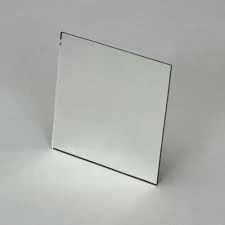

The Beauty of Blue Low-E Glass A Modern Marvel in Architecture
In the realm of modern architecture and energy efficiency, blue low-emissivity (low-E) glass has emerged as a popular choice among architects, builders, and homeowners alike. This advanced glazing technology not only enhances the aesthetic quality of buildings but also contributes significantly to energy conservation. Understanding the characteristics, advantages, and applications of blue low-E glass can illuminate its importance in contemporary building design.
What is Low-E Glass?
Low-E glass is a type of energy-efficient glazing that features a microscopically thin coating of metal or metallic oxide. This coating is designed to reflect radiant heat, reducing the amount of heat that escapes from a building in winter while keeping unwanted solar heat at bay during hot summer months. Blue low-E glass specifically incorporates a blue tint that adds a contemporary and stylish appearance, making it an attractive option for both residential and commercial structures.
Aesthetic Appeal
One of the standout features of blue low-E glass is its striking color. The blue hue not only enhances the overall aesthetic of a building but also provides a more serene and modern look compared to traditional clear glass. This tinting can either be used as a full facade treatment or accentuated in specific areas to create visual interest. From sleek office buildings to luxury homes, the blue low-E glass complements various architectural styles while providing an eye-catching design element.

Energy Efficiency
Beyond its beauty, blue low-E glass is lauded for its superior energy efficiency. Buildings using this type of glazing can maintain a more stable internal temperature, leading to reduced reliance on heating and cooling systems. According to research, low-E glass can minimize energy consumption by up to 40%, which significantly lowers utility bills and reduces the environmental impact. Furthermore, the reduction of heat gain and loss translates to a more comfortable living or working environment, enhancing occupant satisfaction.
Environmental Impact
As the world places a greater emphasis on sustainability, the benefits of blue low-E glass align perfectly with green building practices. The use of low-E glass in construction can contribute to LEED (Leadership in Energy and Environmental Design) certification, which recognizes buildings that meet high sustainability standards. By minimizing energy consumption, these structures not only reduce their carbon footprint but also encourage a culture of environmental responsibility.
Conclusion
Blue low-E glass represents a perfect blend of functionality, aesthetic appeal, and energy efficiency. Its innovative properties and beautiful design make it an ideal choice for modern architecture that seeks to harmonize style with sustainability. As more architects and builders recognize the advantages of this advanced glazing technology, we can expect to see an increased prevalence of blue low-E glass in our urban landscapes. Whether used in residential homes or towering skyscrapers, this glass not only transforms buildings but also plays a vital role in cultivating a more energy-conscious future. Embracing blue low-E glass is more than just a design choice; it is a step towards a more sustainable and beautiful world.